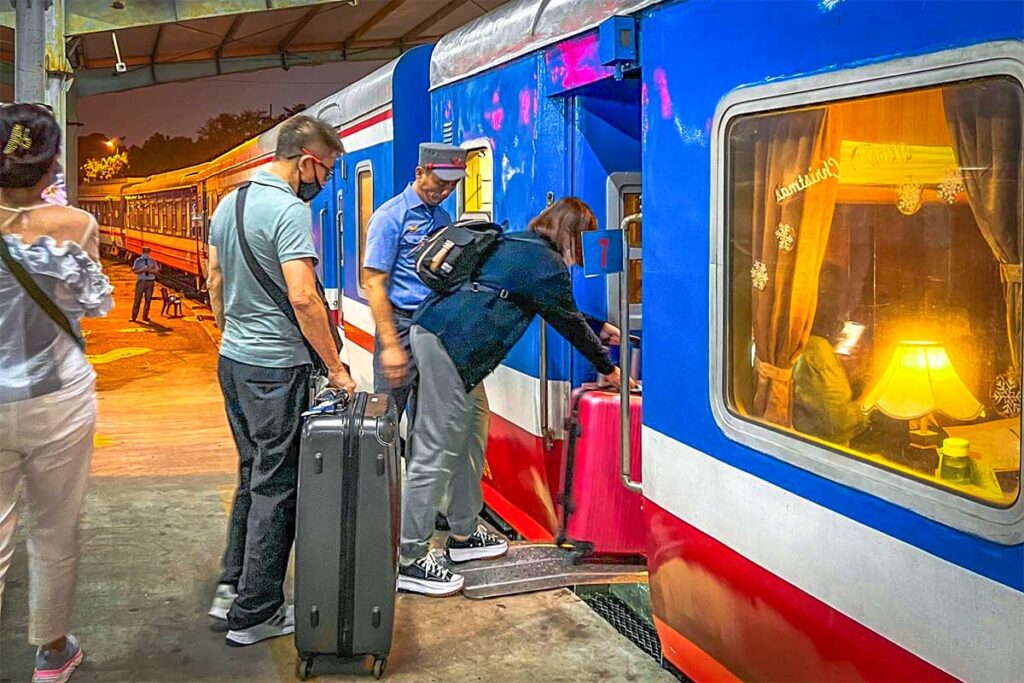Lao Cai – “Sapa’s train station”
One important thing to know before booking the train to Sapa: Sapa doesn’t have its own train station.
When people talk about traveling from Hanoi to Sapa by train, what they really mean is taking the train to Lao Cai Railway Station, which is the nearest station to Sapa. From Lao Cai, it’s about 30 km — roughly a 1-hour drive up the mountains to reach Sapa town.
So, traveling to Sapa by train always includes two parts:
- The overnight train from Hanoi to Lao Cai.
- A final transfer from Lao Cai to Sapa — usually by shuttle bus, taxi, or private car.
This last leg of the trip is straightforward. Transport is always waiting when the train arrives, even for the early morning arrivals.
In summary, if you’re searching for the train to Sapa, remember that it always means train to Lao Cai plus a short scenic drive up to Sapa town.
The train route from Hanoi to Sapa
Step 1: Getting to Hanoi Railway Station
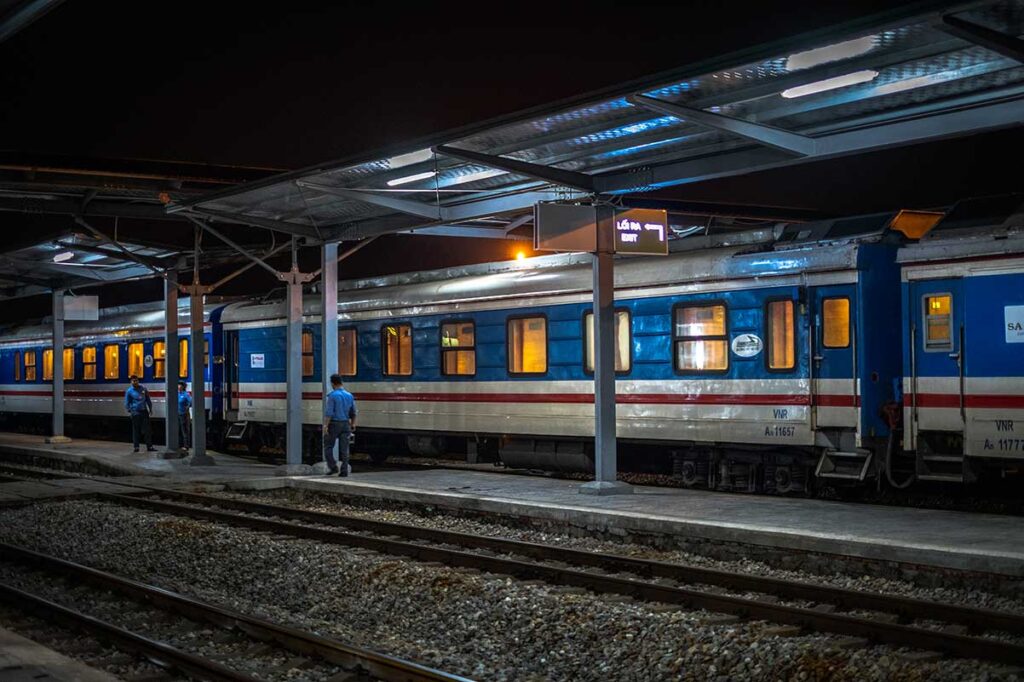
Your journey from Hanoi to Sapa by train starts at Hanoi Railway Station, located right in the city center.
The station has two entrances:
- Station A: For southbound trains (Ninh Binh, Da Nang, Ho Chi Minh City).
- Station B: For northbound trains to Lao Cai and the Chinese border — this is where the train to Sapa departs.
If you take a taxi or Grab, make sure to tell the driver “Ga Trần Quý Cáp” (Station B) when heading for the Sapa train. Otherwise, they might drop you at Station A, which is on the opposite side of the tracks.
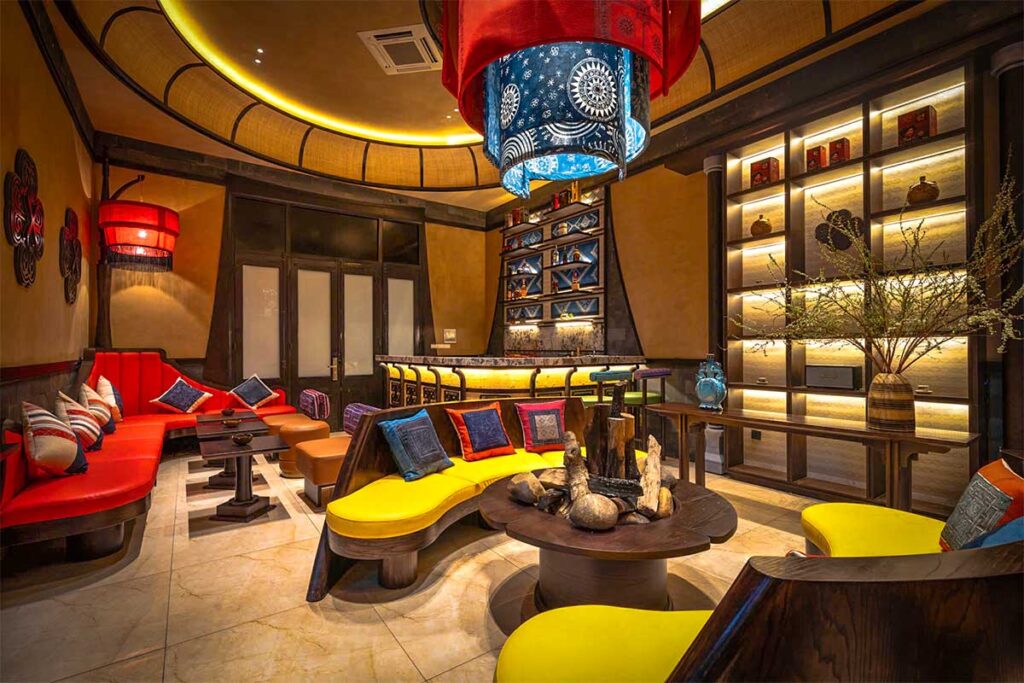
Step 2: Getting ticket and finding your train
- If you booked a tourist train from Hanoi to Sapa, you’ll usually need to check in at the operator’s small office near Station B entrance. They’ll give you your physical ticket or guide you to the platform.
- If you booked a standard Vietnam Railways sleeper, you can go straight to the gate with your printed ticket or QR code.
Important: Your ticket shows a wagon number and a bed (berth) number. The wagon number tells you which carriage to board, and the berth number shows which bed inside the cabin is yours.
Step 3: Enjoy the trip to Lao Cai
The journey from Hanoi to Sapa by train takes around 7.5 to 8 hours overnight.
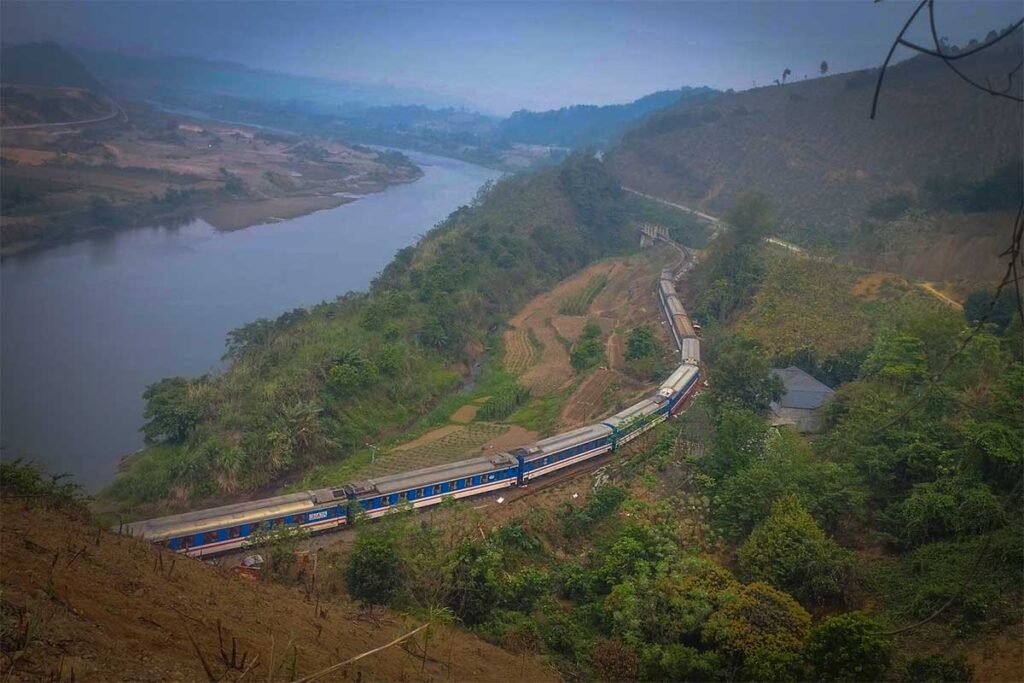
Once the train rolls out of Hanoi, it’s time to relax. You’ll hear the steady rhythm of the tracks — a bit bumpy, but part of the charm of taking the train to Sapa.
You’ll sleep through the night as the train passes through northern Vietnam’s countryside. By morning, you’ll wake up to misty mountain views as you approach Lao Cai — the gateway to Sapa by train.
Step 4: From Lao Cai to Sapa
Once you arrive in Lao Cai, you still have about 30 km (1 hour) to reach Sapa. It’s an easy transfer with plenty of options:
- Shuttle bus: The cheapest option, waiting outside the station.
- Metered taxi: Good for direct door-to-door service.
- Pre-arranged private car: The most comfortable, especially if your hotel isn’t in Sapa town itself.
Check our full guide: From Lao Cai to Sapa for detailed info and tips on this final leg of the journey.
Types of trains from Hanoi to Sapa
When planning to travel from Hanoi to Sapa by train, you’ll notice there are two types of trains: the standard Vietnam Railways sleeper and various tourist trains that are privately operated but attached to the same train engine.
Option 1: Standard Vietnam Railways Train
This is the cheapest way to travel to Sapa by train. It’s functional and safe, but don’t expect luxury.
Cabin types include:
- 4-berth soft sleeper – The best choice for comfort if you’re using the regular train.
- 6-berth soft sleeper – Cheaper but cramped; fine if you don’t mind sharing with more people.
- Soft seat: Slightly better padding, but still just a reclining seat. Not designed for sleeping, and very uncomfortable compared to a sleeper cabin.
- Hard seat: The cheapest option — simple wooden or lightly padded benches. Extremely uncomfortable for an 8-hour overnight journey.
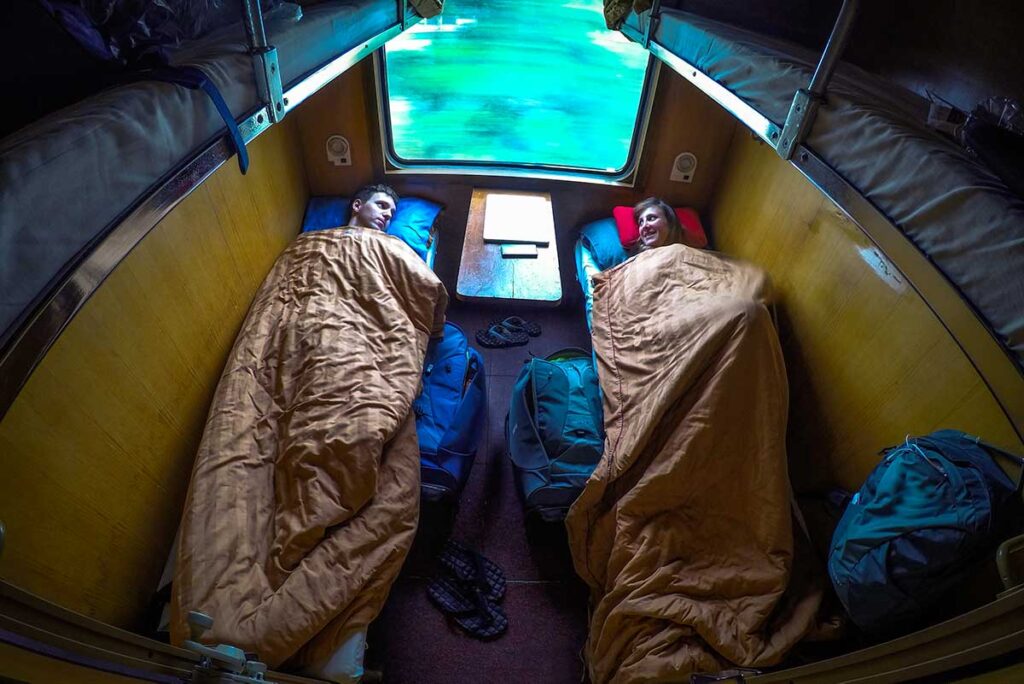
Standard trains are clean enough, safe, and reliable — but very basic compared to tourist train options.
Option 2: Tourist trains
Most travelers who choose to go from Hanoi to Sapa by train prefer the tourist train option. These are privately operated wagons that are attached to the regular Vietnam Railways train but refurbished for comfort.
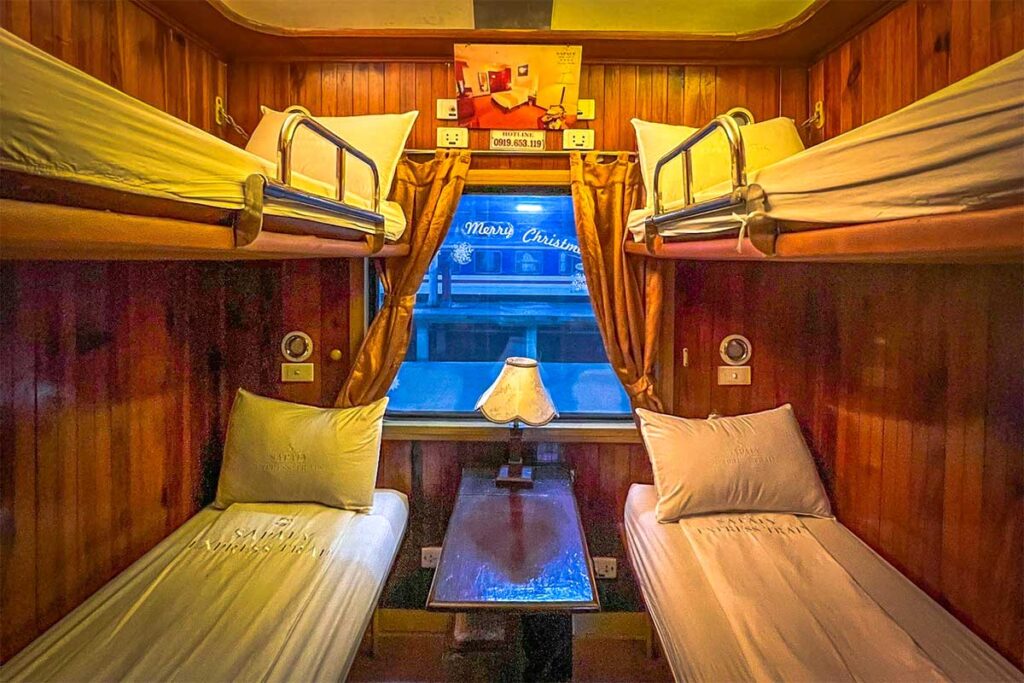
What’s better about tourist trains?
- Softer, wider beds with good-quality bedding.
- Nicer interiors — wood paneling, lamps, curtains, and a more cozy vibe.
- Upgraded toilets — generally western-style and cleaner than standard wagons.
- Some companies offer 2-berth VIP cabins, perfect for couples or anyone wanting privacy.
- Basic amenities like snacks, water, free tea/coffee, and sometimes a breakfast box.
Traveling to Sapa by train in one of these tourist carriages feels like part of the experience — not just transportation. It’s popular with couples, families, and anyone who values a more comfortable journey.
If you’re not sure which tourist train is best for you, scroll down to best tourist trains from Hanoi to Sapa where we compare them in detail.
Facilities and experience on the train
Sleeping experience
The experience of traveling from Hanoi to Sapa by train is charming, but it’s not like a high-speed European train. The railway track is older, so expect the ride to be a bit bumpy and shaky, especially in some sections. Most travelers find it manageable — even part of the adventure of going to Sapa by train.
If you are taller than around 185 cm (6 feet), you may need to sleep a little diagonally in the bunk to stretch your legs fully.
That said, compared to sleeper buses, most travelers agree that a real bed in a train cabin feels far more comfortable and relaxing.
Food on the train
- There is no dining car on the train to Sapa (some sleeper trains in Vietnam have it, but not on this night route)
- The train departs late in the evening (8–10 PM) so most travelers eat dinner before boarding.
- On standard trains, a cart comes through with instant noodles, snacks, drinks, coffee, and beer.
- Tourist trains sometimes include free water, tea, small snacks, and occasionally a light breakfast box.
- If you want more than just snacks, it’s smart to bring something with you — a banh mi, fruit, or whatever you pick up in Hanoi before departure.
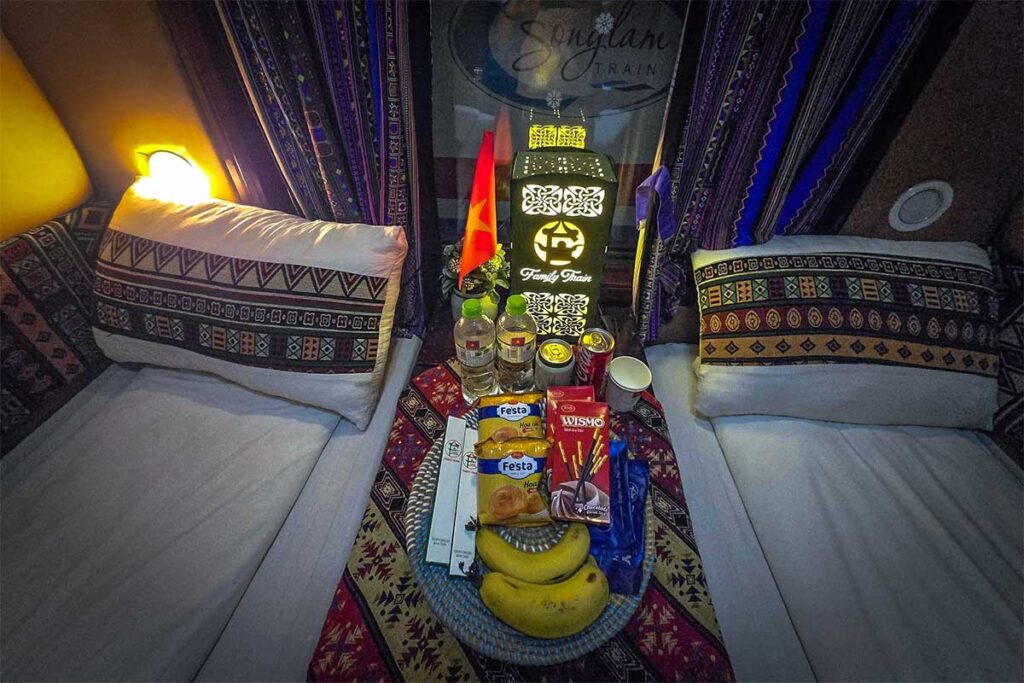
Inside the cabin
- Luggage storage: under the lower bunks, on a shelf above the door, or sometimes squeezed between beds. There’s no dedicated luggage room, but it’s safe to keep bags in your cabin.
- Charging ports: Most cabins on both the standard train and tourist trains have a few outlets.
- Air conditioning: Yes, but it’s shared for the cabin — no individual temperature control. It can feel chilly for some, especially overnight, so bring a sweater or light jacket.
Toilets on the train
- Tourist trains generally have clean, western-style toilets. Some are surprisingly decent given the age of the train.
- Standard trains have a mix: mostly western toilets, but occasionally squat toilets depending on the carriage.
- Toilets are cleaned at departure from Hanoi, tourist trains toilets get cleaned regularly.
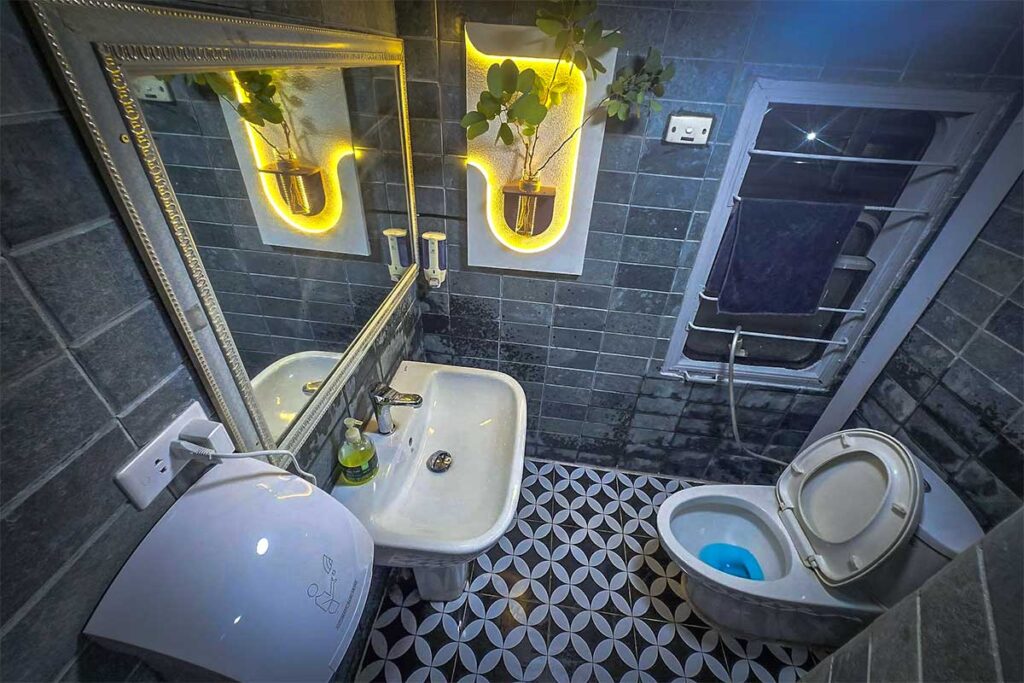
Best tourist trains from Hanoi to Sapa
There are several tourist trains operating on the Hanoi to Sapa route. They all share the same railway, attached to the standard Vietnam Railways train, but each company has its own refurbished carriages with upgraded cabins.
All offer clean, comfortable beds, air conditioning, and better service than the standard trains. Some even provide access to private waiting lounges at the stations.
Prices vary depending on the cabin type and where you book — booking platforms like 12Go Asia sometimes show cheaper prices than the official train websites.
1. Chapa Express
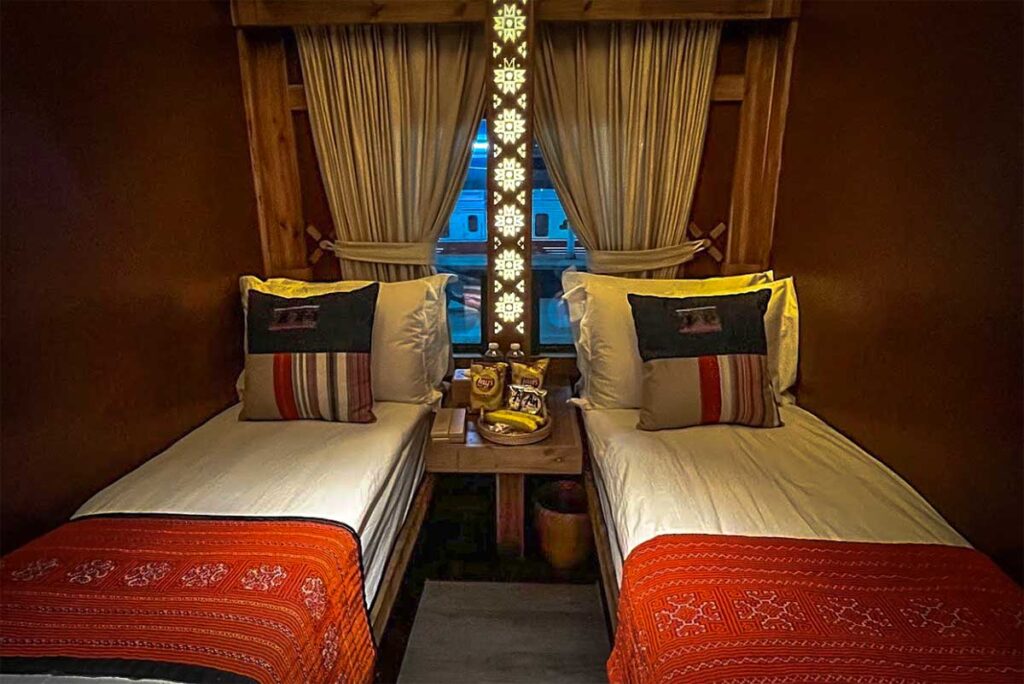
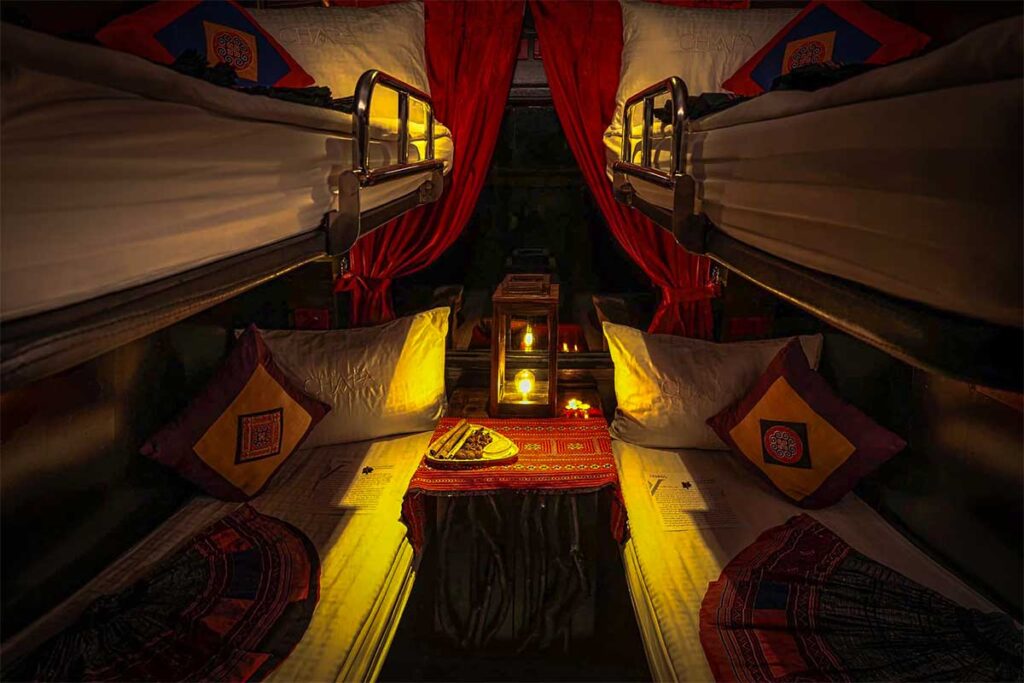
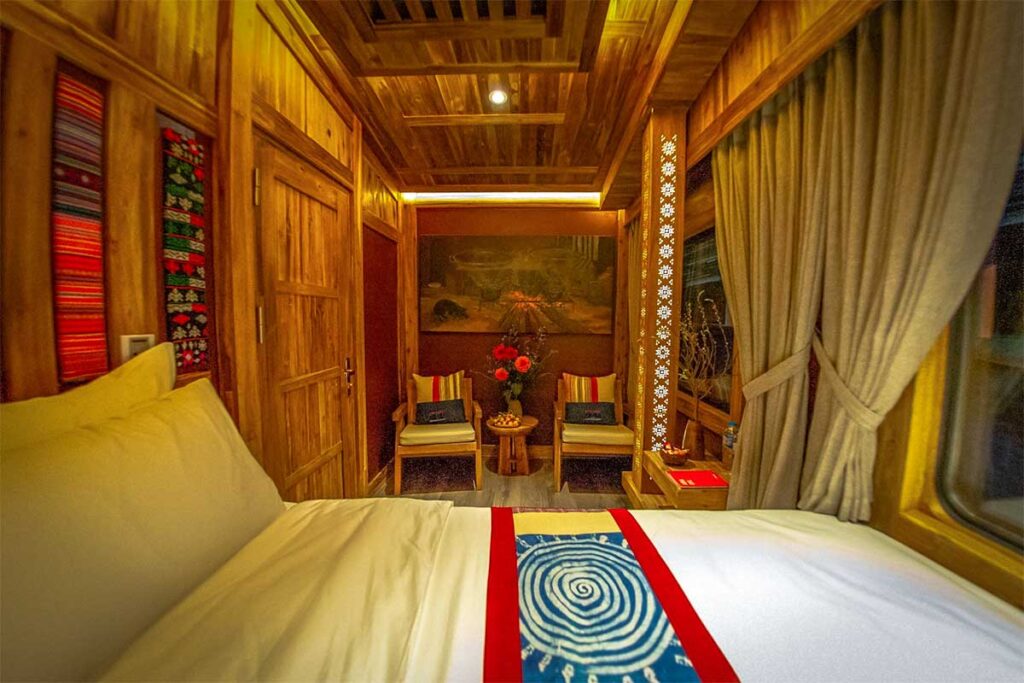
Price range: From $65 to $125 per person (varies by cabin and booking site)
Cabin types:
- Deluxe 4-berth cabin (~$65 per person)
- VIP 2-berth cabin (~$115 per person)
- Suite 2-berth cabin (~$125 per person)
About Chapa Express:
Chapa Express is known for its cozy design inspired by Sapa’s ethnic culture. The cabins are clean, well-maintained, and offer good comfort with quality bedding and wood-panel interiors. They also provide access to the Chapa Lounge at Lao Cai Station — a rare bonus for freshening up after your journey.
2. Family Express
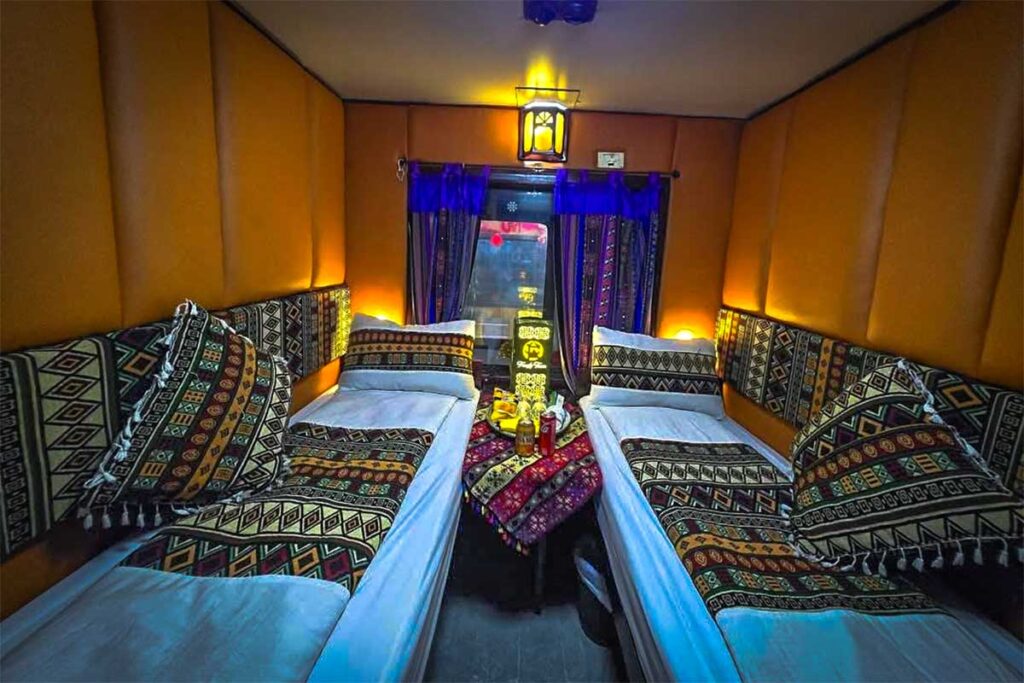
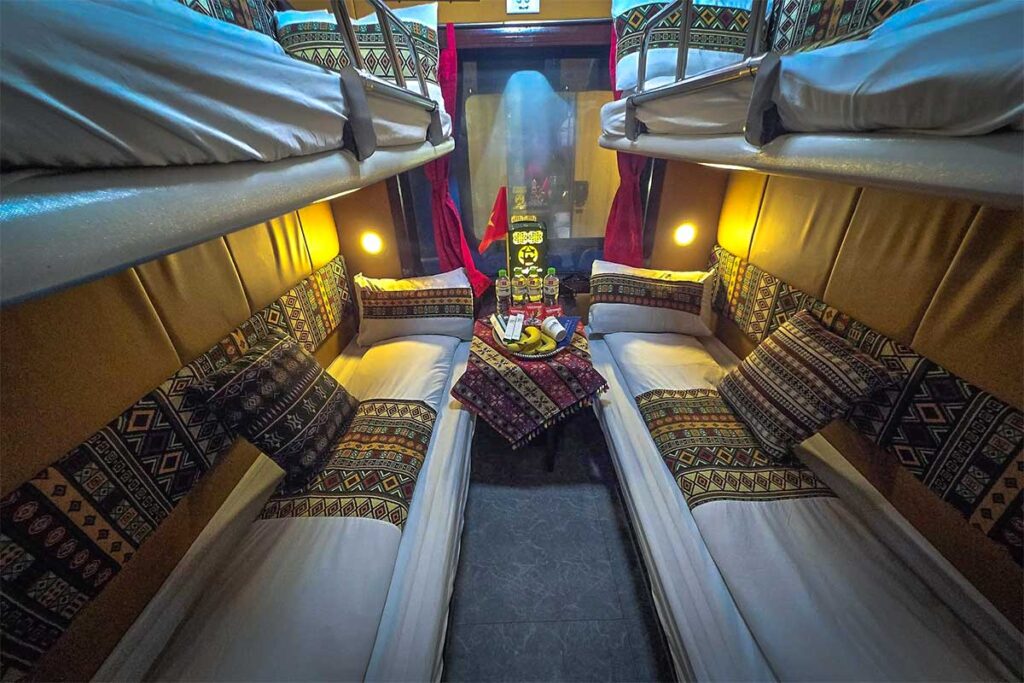
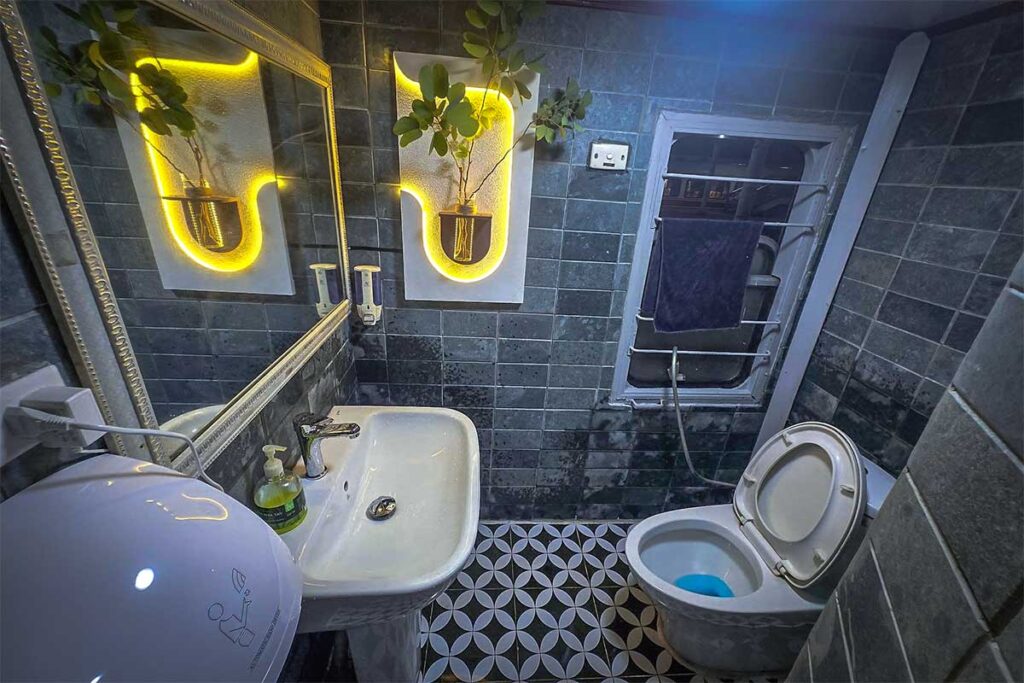
Price range: From $55 to $95 per person
Cabin types:
- Deluxe 4-berth cabin (~$55 per person)
- VIP 2-berth cabin (~$95 per person)
About Family Express:
A simple but good option focused on affordability for families and groups. The cabins are clean and comfortable with basic amenities like water, snacks, and slippers. Not as luxurious as others but solid value for the price.
3. Sapaly Express
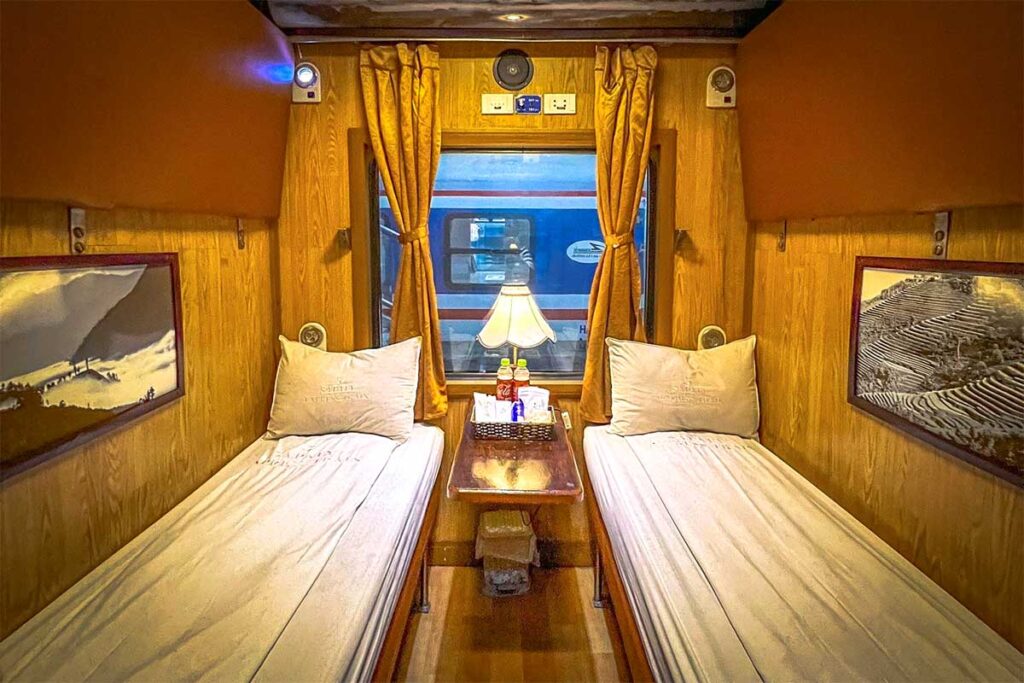
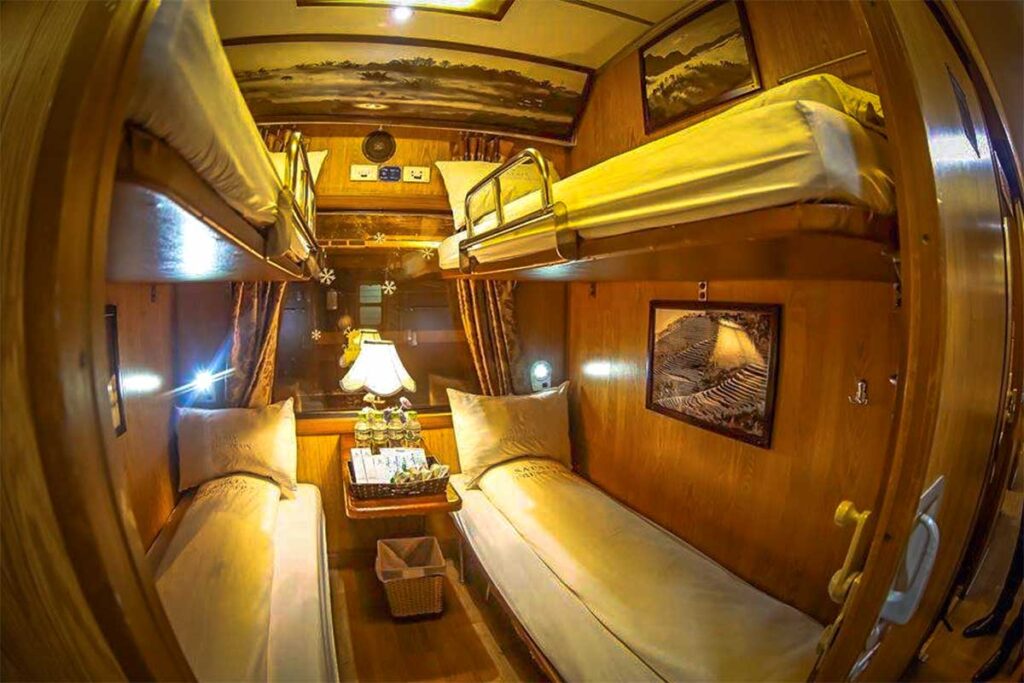
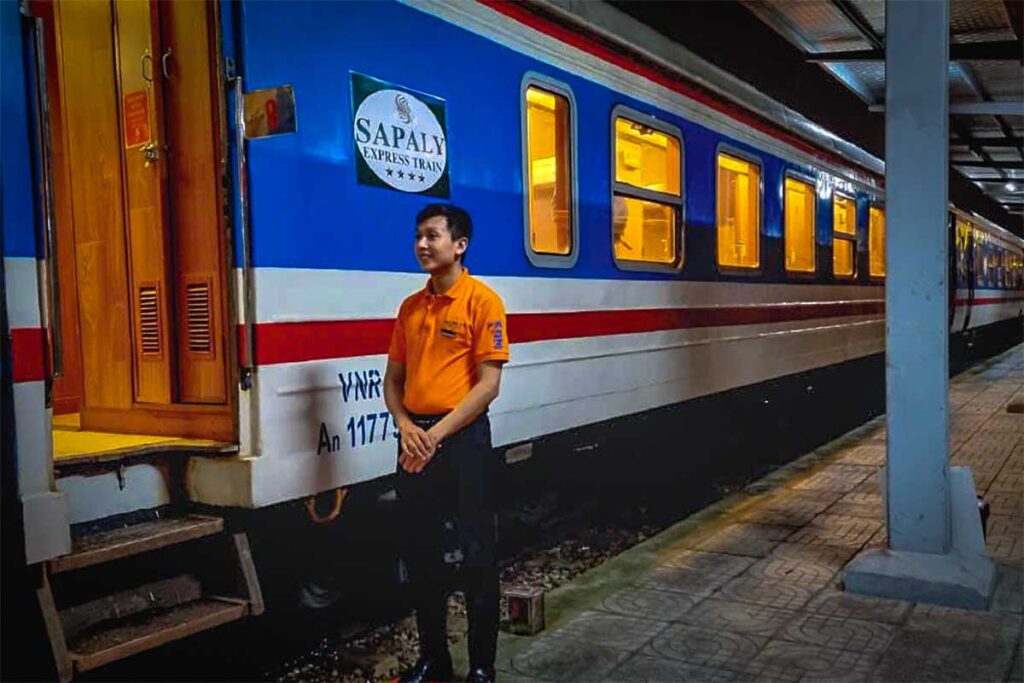
Price range: $60–$105 per person (lower prices sometimes found on 12Go)
Cabin types:
- Deluxe 4-berth cabin (~$60 per person)
- VIP 2-berth cabin (~$105 per person)
About Sapaly Express:
Sapaly Express has a modern, hotel-like interior with Sapa-inspired decor. The cabins feel spacious, clean, and comfortable, offering small extras like toothbrushes, slippers, and water. A very reliable mid- to high-range choice.
4. Damitrans Express
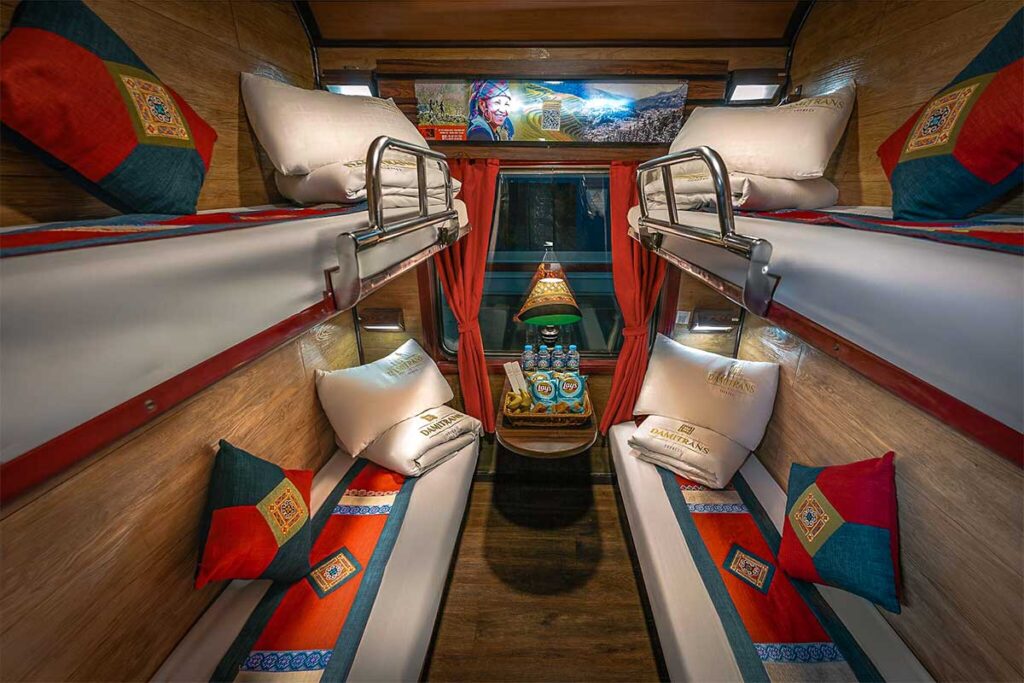
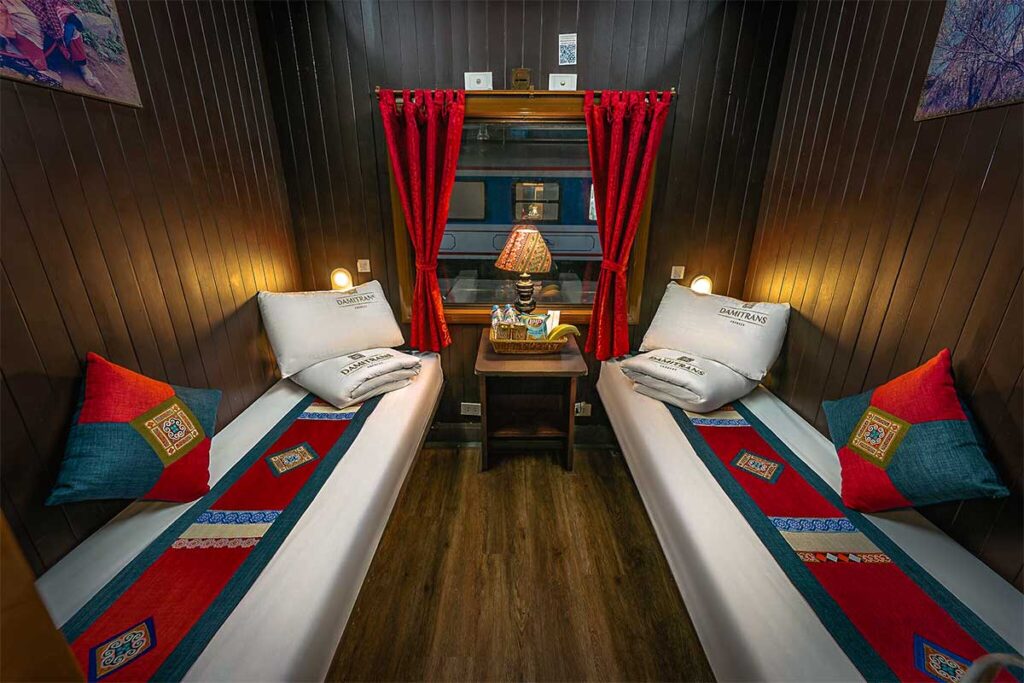

Price range: $31–$40 per person
Cabin types:
- Deluxe 4-berth cabin (~$31–$40 per person)
About Damitrans Express:
A more budget-friendly option compared to others. The cabins are simple but clean and surprisingly comfortable. Don’t expect luxury, but for the price, it’s reliable and good value. Note that this train does not operate a VIP 2-berth cabin.
5. VIC Sapa Train
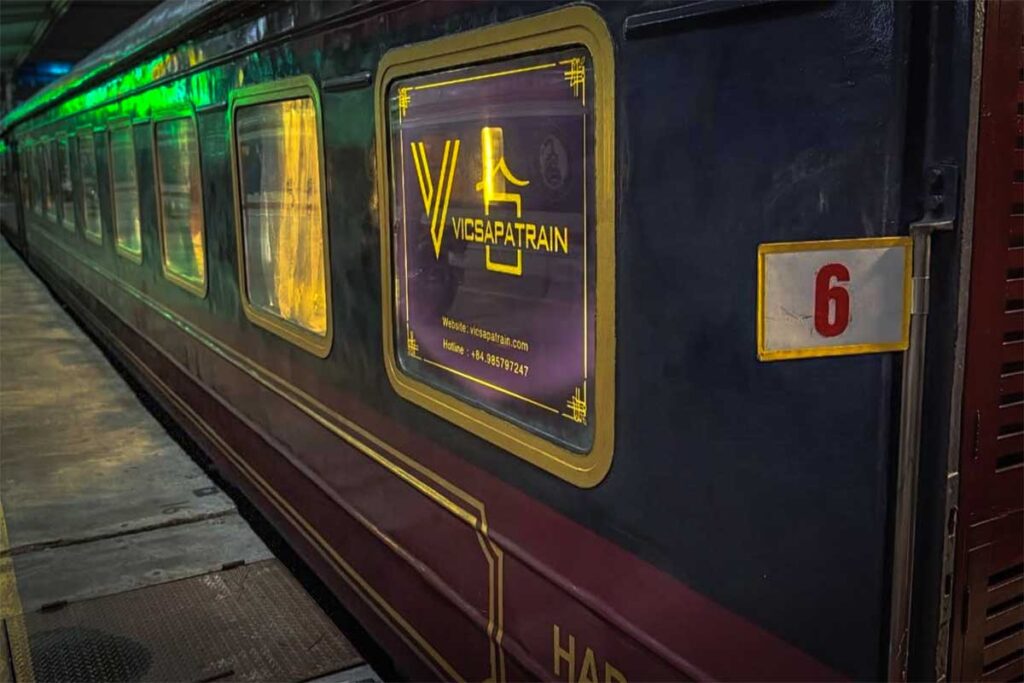
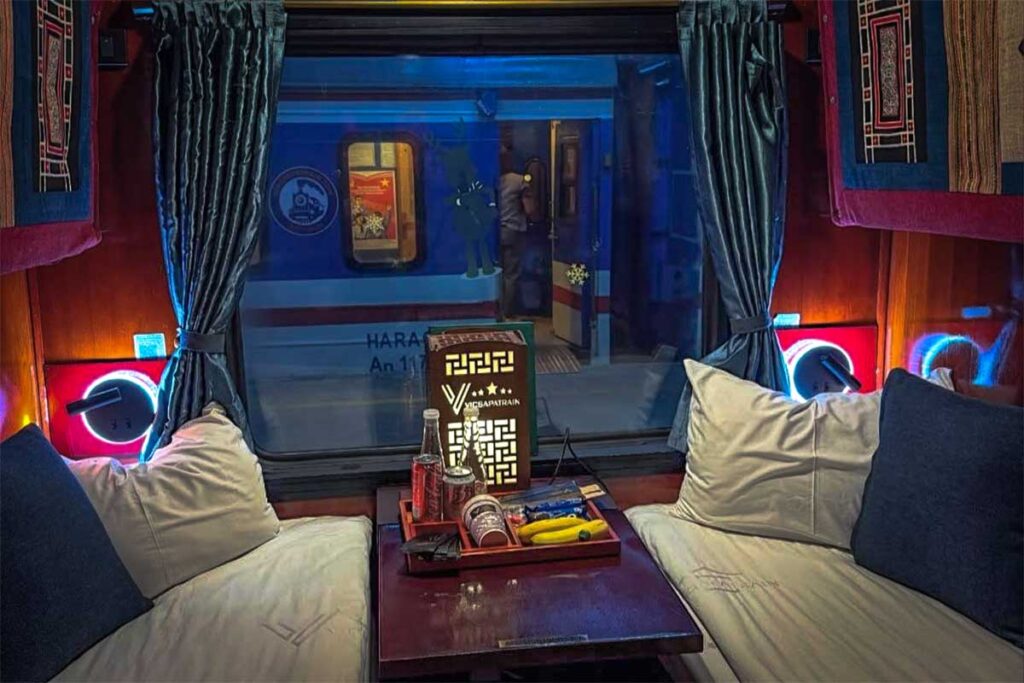
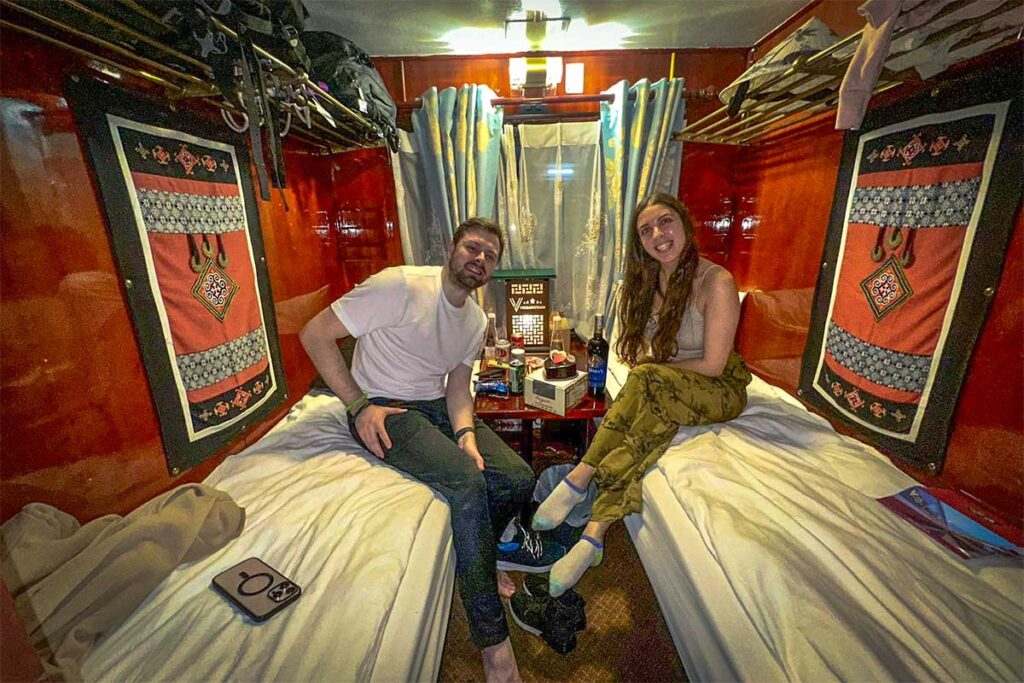
Price range: $60–$115 per person
Cabin types:
- Luxury 4-berth cabin (~$60 per person)
- VIP 2-berth cabin (~$105 per person)
- VIP 1-berth cabin (double bed) (~$115 per person)
About VIC Sapa Train:
VIC Sapa is one of the newest trains on this route with a very modern and clean design. Known for its comfortable beds, thoughtful amenities (like toiletries and snacks), and reliable service. It even has a VIP waiting room in Hanoi Station.
6. King Express
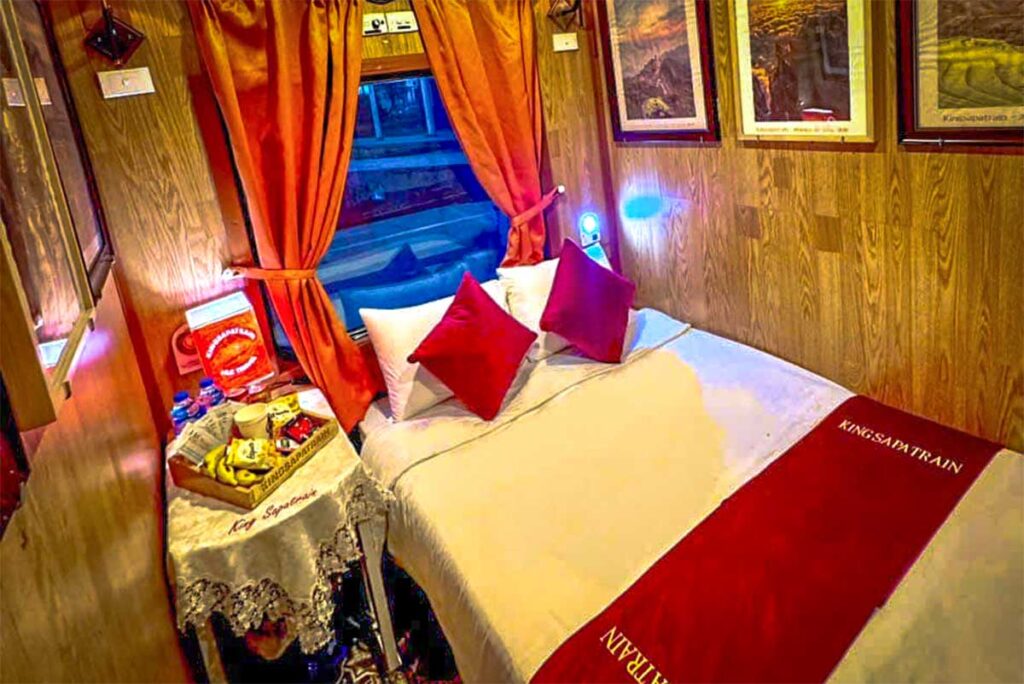
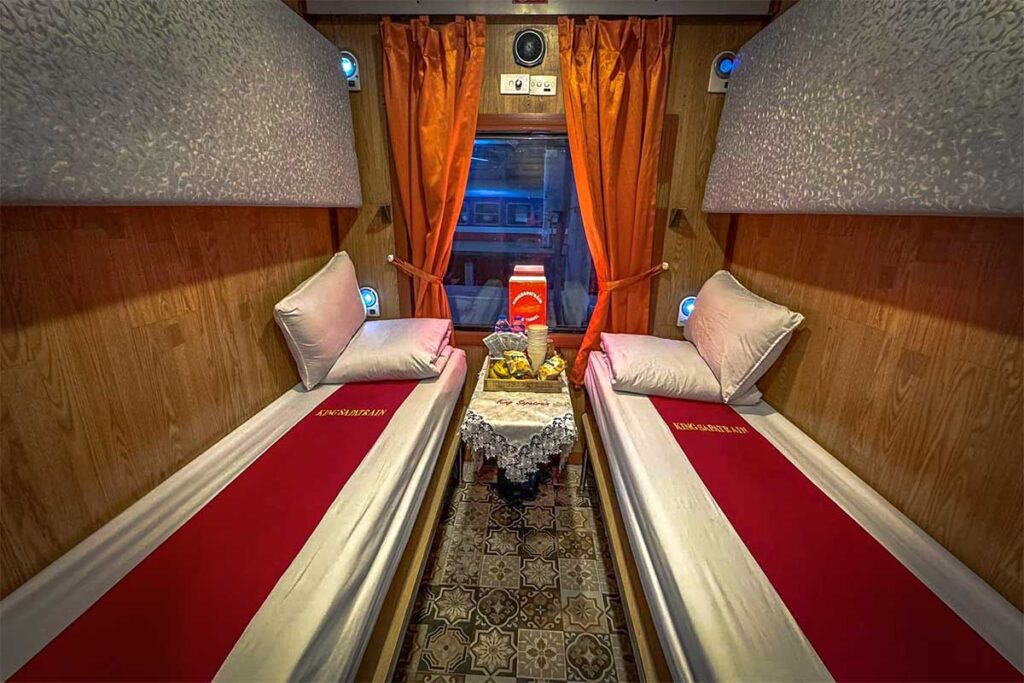
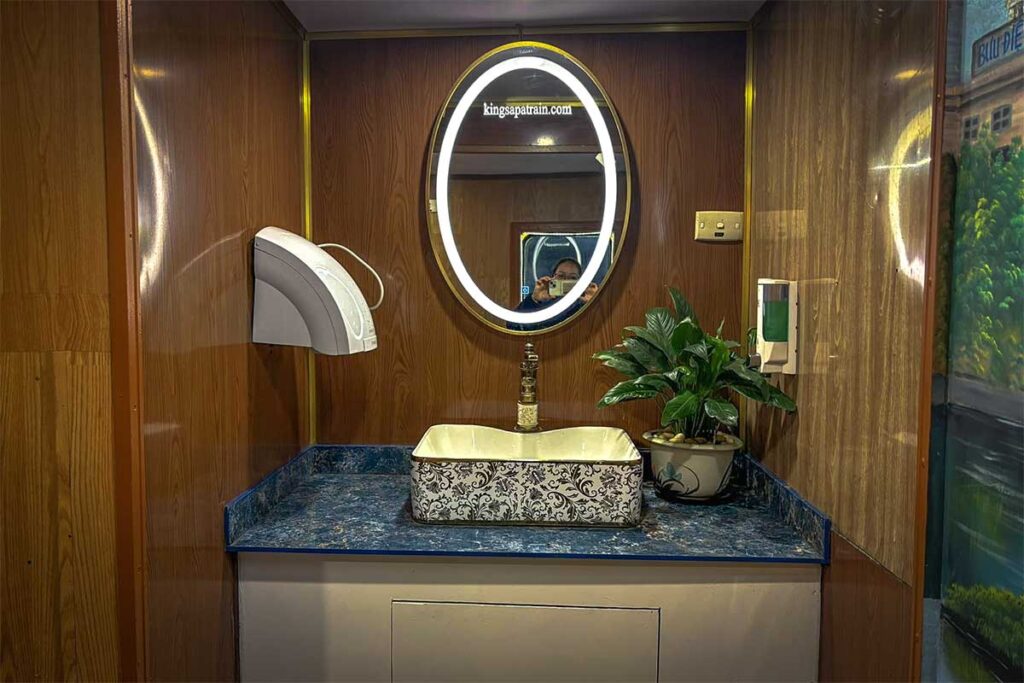
Price range: $55–$210 depending on cabin type
Cabin types:
- Suite 4-berth cabin (~$55 per person)
- VIP 2-berth cabin (~$190 per cabin)
- VIP 1-berth (double bed) (~$210 per cabin)
About King Express:
A solid, mid-range option with comfortable wooden interiors and friendly service. Not the most modern but well-maintained. A good choice for both groups and couples wanting a private cabin. Comes with snacks, drinks, and basic amenities.
How to book the train to Sapa
Booking a train from Hanoi to Sapa is easy, but the process depends on whether you want the standard Vietnam Railways train or a more comfortable tourist train to Sapa. Here are the best ways to book:
1. Via the Official Website (Dsvn.vn)
- Only the standard Vietnam Railways trains are available at Dsvn.vn.
- Tourist trains like Sapaly, King Express, or Orient Express are not listed on the system.
- This is the cheapest option, but the website can feel a bit clunky and isn’t always foreigner-friendly.
2. Online ticket platforms
- Platforms like 12Go Asia and Baolau are the easiest for most travelers.
- You can easily compare tourist trains and regular trains on the same website.
- Super convenient, clear cancellation policies, and supports international payments.
3. Direct with the tourist train company
- You can book directly on the website of tourist trains like Sapaly, King Express, or Orient Express.
- Works well if you already know exactly which Sapa train you want.
- Downsides: You can’t compare multiple trains easily, and some train websites have limited English or clunky payment systems.
4. Through a travel agent
- Book online through agencies like us, or at a local agency in Hanoi — including directly through your hotel.
- The advantage: agencies can help with custom arrangements, private cabins, or combined Sapa tours.
- It also helps with smooth communication, changes, or last-minute requests.
Book a Sapa tour with train, transfers & more
Want everything arranged in one go? Our Sapa tours include the Hanoi to Sapa train, all transfers, plus incredible experiences like trekking, car sightseeing, and ethnic market visits. No stress, no hassle — just enjoy the journey. Use the form below to start planning your trip.
5. At the train station
- You can buy tickets at Hanoi Railway Station, but only for standard Vietnam Railways trains.
- Tourist train tickets cannot be purchased at the station. They are handled by online platforms or travel agencies.
- Risk: Standard sleeper tickets can sell out — especially during weekends, holidays, or high season. Booking last-minute at the station is possible but not recommended.
How to book a private train cabin
When you travel from Hanoi to Sapa by train, the default setup is a 4-berth cabin. This means you’re booking an individual bed within a shared cabin — unless you choose otherwise.
If you want a private cabin, the rule is simple:
- You must book all 4 beds in that cabin.
- This is common for couples or small groups who want privacy, better sleep, and no sharing with strangers.
- Yes, you do pay for the extra unused beds, but many travelers feel it’s worth it for the comfort.
Some tourist trains to Sapa also offer dedicated 2-berth VIP cabins. These are perfect for couples but come at a premium price — usually 20–30% higher than booking 4-bed cabins per person.
Tip: If privacy matters to you on the train to Sapa, book early. Private cabins, especially 2-berth VIP types, are limited and often sell out quickly during weekends or high season.
Tips for taking the train to Sapa
Where to keep your luggage?
- Store large bags under the lower bunks, on the overhead shelf, or in the space above the door.
- Many travelers also leave a suitcase at their hotel in Hanoi (most offer free storage) and bring just what they need for their Sapa trip by train. This is very common.
Pack a day bag for the train
Cabins on the train to Sapa are compact — opening a big suitcase is a hassle.
- Bring a small daypack with everything you need during the journey.
- Suggested items: toiletries, a change of clothes, snacks, phone charger, headphones, earplugs, and a water bottle.
What to bring on the train
- Toiletries: Basic, but useful even on tourist trains.
- Toilet paper or tissues: The train sometimes runs out.
- Earplugs or headphones: The Hanoi to Sapa train has typical railway noise — if you’re a light sleeper, you’ll appreciate this.
- Light sweater or jacket: The AC can feel chilly at night, even in summer.
- Snacks and water: While simple food is sold on board, it’s limited.
- Small lock: Not required, but useful for peace of mind if you leave valuables unattended in the cabin.
Train vs Bus – What’s better?
If you’re planning the trip from Hanoi to Sapa, you’ll quickly realize there’s an alternative to the train: the bus. Both options are popular — each with its own pros and cons.
So what’s better? The train to Sapa or the bus? Here’s how to compare them:
Why take the bus?
- Faster: Travel time is about 6–7 hours, compared to 8 hours for the train plus the extra transfer from Lao Cai to Sapa.
- Direct: Buses go straight to Sapa town. No extra car, taxi, or shuttle needed.
- Cheaper: Bus tickets are generally more affordable than the train, especially compared to tourist trains.
Downsides of the bus
- Less comfortable for sleeping. Even on sleeper buses, you’re on a reclining bunk, not a real bed.
- Some travelers feel less safe, especially on overnight buses. This is mostly about personal comfort — the roads are safe, but not everyone likes bus travel at night.
- No ability to move around. On the Hanoi to Sapa train, you can stand, stretch, visit the toilet easily — a bus keeps you in your seat for the whole ride.
- You miss the nostalgic, scenic, and classic experience of going to Sapa by train. For many travelers, the train is part of the adventure.
Pro tip:
You don’t have to choose just one! Many travelers take the train to Sapa for the comfortable overnight journey, and then return to Hanoi by bus — it’s faster, direct, and gives you a different experience. This combo is perfect if you want to try both and save time on the way back. Read more about: Hanoi to Sapa by bus.
